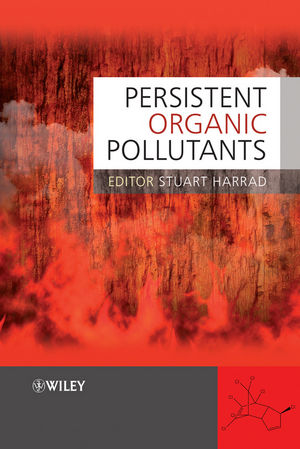Persistent Organic PollutantsISBN: 978-1-4051-6930-1
Hardcover
288 pages
May 2010, Wiley-Blackwell
 This is a Print-on-Demand title. It will be printed specifically to fill your order. Please allow an additional 15-20 days delivery time. The book is not returnable.
|
||||||
References.
2. Brominated Flame Retardants (Robin J. Law).
2.1 Introduction.
2.2 Sources.
2.3 Overview of measurement techniques.
2.4 Physico-chemical properties and their influence on environmental fate and behaviour.
2.5 Overview of toxicology.
2.6 Environmental levels – present, past and future temporal trends.
2.7 Human exposure – magnitude and relative significance of pathways.
2.8 Summary/Conclusions.
Acknowledgements.
References.
3. Perfluoroalkyl Compounds (Naomi L. Stock, Derek C. G. Muir, and Scott Mabury).
3.1 Introduction and Nomenclature.
3.2 Manufacturing and Production.
3.3 Overview of Toxicology.
3.4 Physical Chemical Properties and Environmental Fate.
3.5 Overview of Measurement Techniques.
3.6 Human Exposure.
3.7 Sources of PFCs to the Environment.
3.8 Environmental Measurements.
References.
4. Chirality as an Environmental Forensics Tool (Charles S. Wong, Nicholas A. Warner).
4.1 Introduction.
4.2 Classes of Chiral Legacy and Persistent Organic Pollutants.
4.3 Measuring and Quantifying Enantiomer Composition of POPs.
4.4 Chirality to Characterize Environmental Biochemical Processes.
4.5 Chirality to Quantify Rates of Biotransformation.
4.6 Chirality as a tool for Pollutant Source Apportionment.
4.7 Caveats in using Chirality to probe Biologically-Mediated Environmental Processes.
4.8 Conclusions.
Acknowledgements.
References.
5. Persistent Organic Pollutants in the Developing World (Bondi Gevao, Henry Alegria, Foday M. Jaward and Mirza U. Beg).
5.1 Introduction.
5.2 Sources of POPs in developing countries.
5.3 Levels of POPs in developing countries.
5.4 Problems related to POPs in Developing Countries.
5.5 Conclusions.
References.
6. Sources, Fate and Effects of Contaminant Emissions in Urban Areas (Erin Hodgeand Miriam Diamond).
6.1 Introduction.
6.2 Chemical Emissions in Urban Areas.
6.3 Chemical Mixtures in Urban Media.
6.4 Urban Chemical Signatures.
6.5 Emissions and Environmental Degradation.
6.6 Urban Form and Chemical Emissions.
6.7 A Quantitative Model of Contaminant Fate in Urban Areas.
6.8 Future Directions.
Acknowledgements.
References.
7. The Contamination of Indoor Environments with Persistent Organic Pollutants (Stuart Harrad).
7.1 Introduction.
7.2 Methods of Sampling.
7.3 Sources and Levels of Indoor Contamination.
7.4 Relative Significance of Indoor Exposure.
7.5 Uncertainties in Estimates of Exposure via Dust Ingestion and Indoor Air Inhalation.
7.6 International Differences in Indoor Contamination.
7.7 Concentrations in Different Microenvironment Categories.
7.8 Influence of Indoor Contamination on Outdoor Contamination.
7.9 Future Research Priorities.
References.
8. The Chemicals that will not go away: Implications for Human Exposure of Reservoirs of Pops (Miriam Diamond and Stuart Harrad).
References.



